Where are all the Roman seal impressions?

In Revelation 5-8, John describes a scroll in heaven that is sealed with seven seals, each of which is broken in turn. One would assume this imagery was based on current practice, yet almost no Roman-era seal impressions from a scroll or other document have been found. Why not?
There are plenty of literary references to the practice of sealing or unsealing various things, including documents. Among those in the NT:
-
Matthew 27:66 – a seal was set on the stone blocking the tomb of Jesus;
-
Eph 1:13, 4:30 – followers of Jesus Christ are sealed with the Holy Spirit (metaphorical use);
-
Revelation chapters 5-8 – the seven seals on one scroll that are broken;
-
Revelation 22:10 – a command not to seal up the book.
Pliny the Elder was a Roman historian of the 1st century (he died at the age of 55 in the eruption of Mt Vesuvius). He said of signet rings, “But on the contrary many people do not allow any gems in a signet-ring, and seal with the gold itself; this was a fashion invented when Claudius Caesar [r. AD 41-54] was emperor.” This assumes that signet rings were used for sealing documents, the question being whether the signet ring should be gold only or whether a gemstone should be incorporated as well (we have discovered examples of both).

Bronze statue of Tiberius with a signet ring, from Herculaneum, AD 37; photo by Todd Bolen at the Getty Villa. This ring appears to represent a solid gold ring, with no gemstone.

Fresco of a wedding scene, with bride and groom wearing finger rings, from Pompeii, 1st century AD. Both wear the ring on the left hand, next to last finger; the man’s ring clearly includes a gemstone, and is likely a signet ring.
Pliny goes on to describe how even those in the lower classes used signet rings to authenticate documents. “Still the employment of a signet-ring must have begun to be much more frequent with the introduction of usury [loaning money at cost]. This is proved by the custom of the lower classes, among whom even at the present day a ring is whipped out when a contract is being made; the habit comes down from the time when there was as yet no speedier method of guaranteeing a bargain, so we can safely assert that with us money began first and signet-rings came in afterwards.” He also mentions a fascinating practice that has been born out in discoveries in Egypt. “The East and Egypt do not seal documents even now, but are content with a written signature.” Sure enough, the Roman-era papyrus documents discovered in the dry sands of Egypt tend to be signed, not sealed.
There is ample evidence from the Greco-Roman world that seals were used. Very many seals have been discovered, some of them still in their original metal settings, often as a finger ring. Many are carved of semi-precious stone. It is clear that such stones are were in fact intended to be used as seals, because they were cut intaglio, so that when pressed into a soft substance they would create a raised image or text. Here are a few examples:

Roman signet ring, iron with a blue glass intaglio depicting a hunter with a shield and spear, circa AD 75.
Just for the record, the Romans also created raised images in stone as well, often referred to as cameos. These were not intended as seals, but as jewelry or other beautiful objects in their own right.
Incised seals were common even in the Iron Age. As with the later period, the image or text was cut into the face of the seal, and any text was cut in reverse so that it would read correctly when impressed into a softer substance.

Seal of Shebnayahu, servant of Uzziah, king of Judah, 7th century BC; photographed by Todd Bolen at the Louvre Museum.
And now for the curious part. Thousands of clay seal impressions are known from the Iron Age. Some are quite fragile, while others are very hard, apparently having been baked when the papyrus documents they sealed went up in flames. Here is a sampling of such seal impressions, also known as “bullae.”
However, despite that fact that thousands of papyrus documents from the Roman era have been found, along with many signet rings, examples of Roman-era seal impressions are extremely rare. Here are a couple examples from those that have been discovered.

Clay seal impression with an eagle’s head and five emperor’s profiles, from Egypt, circa 30 BC – AD 395; Los Angeles County Art Museum. The identity of the five emperors cannot be determined.

Clay seal impression depicting an emperor, from Egypt, circa 30 BC – AD 395; Los Angeles County Art Museum.
So where did all the rest of the seal impressions go? Why are there not more seal impressions from the Roman era? Shouldn’t there be large numbers from places like Pompeii, Stabiae, or Herculaneum, which have produced small hoards of burnt papyrus documents, or from Egypt, where thousands of papyri have been discovered?
The answer seems to lie in a shift in the material that was used for seals. Although soft clay had been used for many centuries, it seems that the Romans preferred wax (Lat. cera) for sealing documents. Wax was used for a number of other purposes during this time, including for candles and as a reusable writing surface on wooden writing tablets. It is notable that when fragile, Roman-era wooden writing tablets are recovered, the wax is generally absent.
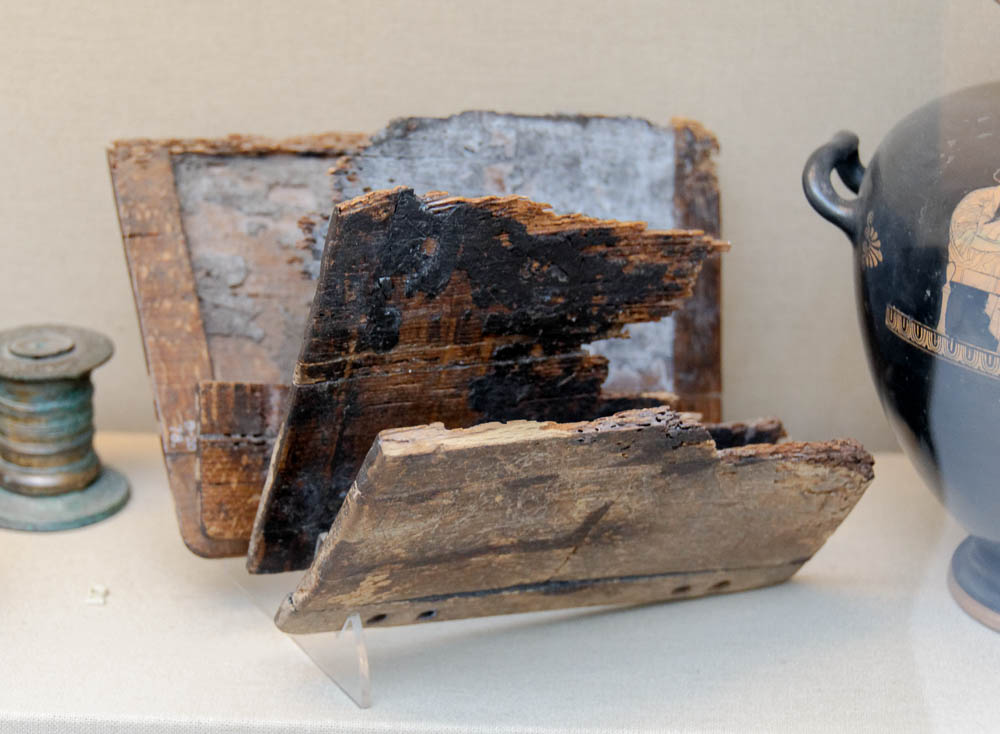
Four leaves of a wooden writing tablet, each face inset for wax, from Egypt, Roman period; photo by Todd Bolen at the British Museum. Note that a few remnants of the original wax is still embedded on some of the leaves.



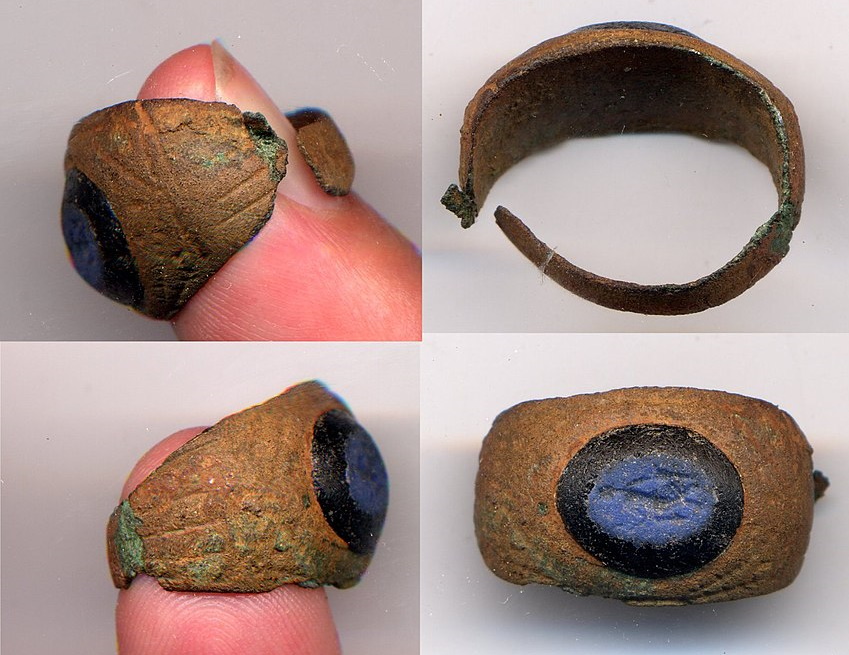

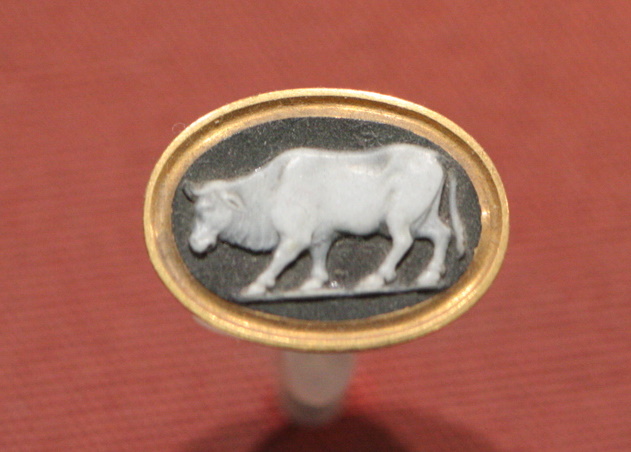
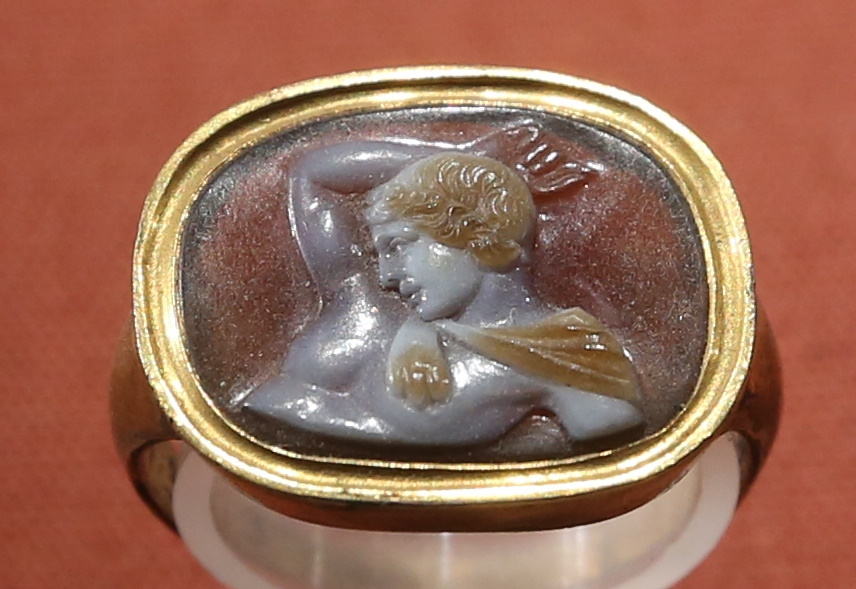




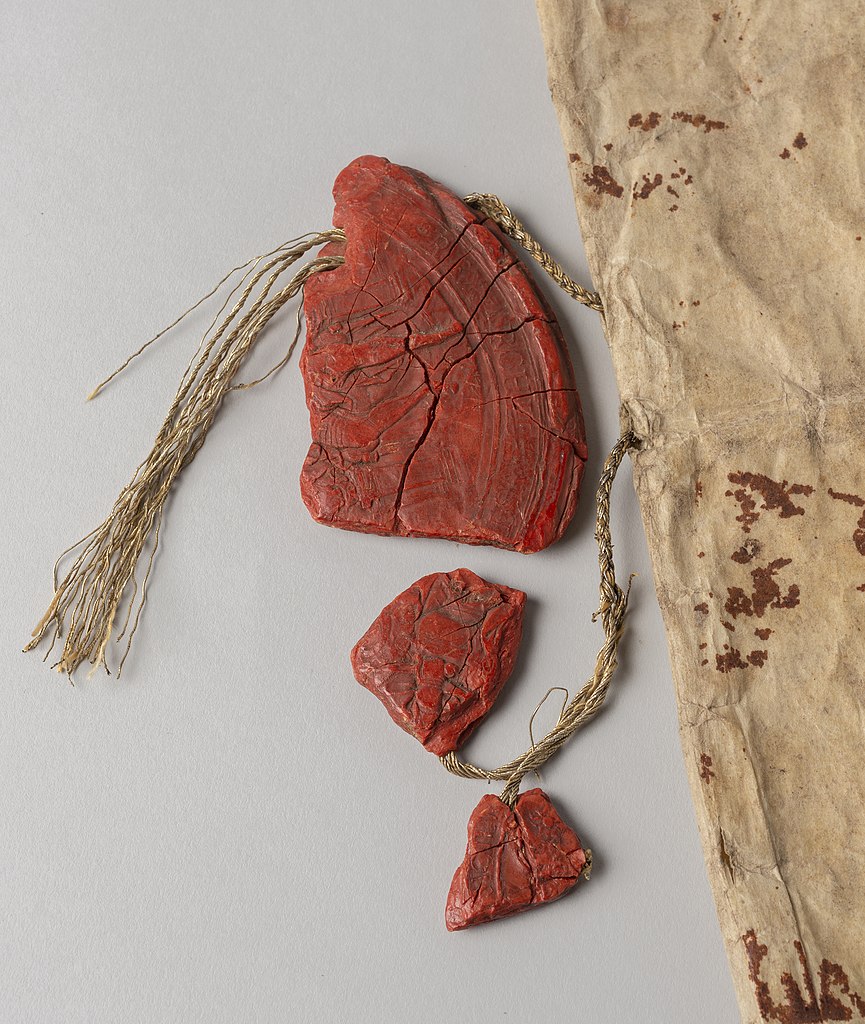

Thank you for the nice display. As you mentioned, bullae are often found that have been broken as they were the soft clay, wrapped within the string and then stamped and dried, tying/sealing together a rolled up papyrus or vellum document. An unbroken seal with the stamped image on it confirmed that the document had not been opened. Storing in clay pots helped preserve the documents-like at Qumran. For a seal to be intact without the document would mean the document had somehow degraded. The bronze statue of Tiberius with the ring was very interesting.